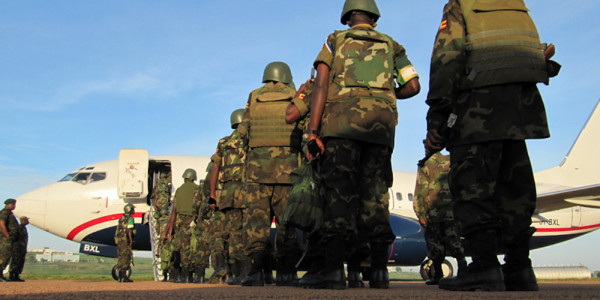

U.S. military personnel killed 27 Al-Shabab fighters in a lone airstrike in northwest Somalia on June 2, U.S. Africa Command announced on Monday, the single deadliest U.S. airstrike against militants in the country to date this year and yet another sign that the DoD’s escalating air campaign there shows no signs of slowing down.
- “This was the deadliest strike to date this year,” AFRICOM spokesman Maj. Karl Wiest told Task & Purpose. “In coordination with the Federal Government of Somalia we will continue to degrade the functional networks of ISIS in Somalia and [Al-Shabab] as these groups pose a direct threat to Americans, our allies, and interests in the region.”
- A rise in lethality: Two other airstrikes southwest of the Somali capital of Mogadishu took out 12 Al-Shabab fighters on May 31 and 10 on May 23, respectively, raising the total number of fighters killed to a reported 47 in just over a week. Based on public AFRICOM announcements, U.S. forces only took out a total of 10 Al-Shabab fighters in a trio of airstrikes between February 21 and April 5 of this year, the last major salvo before the end of May.
- An escalating campaign… The strikes follow a ramp-up in U.S. military involvement in Somalia in the last year. In March, President Donald J. Trump relaxed restrictions on the rules of engagement, laying the groundwork for Secretary of Defense Mattis to announce the following May that the U.S. would send additional troops to the country as part of the Pentagon’s usual advise-and-support mantra. By November, the U.S. has 500 service members in the country and had conducted a whopping 28 airstrikes in just a few months.
- …but not without casualties: Mattis’ May announcement came just one week after a Navy SEAL became the first U.S. service member killed in the country since the infamous 1993 Battle of Mogadishu during a raid on a remote Al-Shabab compound; in June, Al Shabab fighters killed 62 Somali soldiers (and beheaded several) during a vicious attack on a government compound.
It’s worth noting that the same day that AFRICOM formally announced the June 2 strike, the New York Times reported that a “sweeping review” of U.S. special operations forces nationwide will likely end up reducing the number of personnel deployed in Africa, currently the area of operations that’s home to the most SOCOM personnel outside of the Middle East. If anything, that means that we’ll see far more airstrikes in the coming months.
WATCH NEXT:
